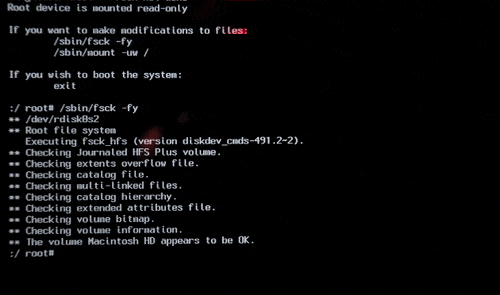

- WHICH DISK IS MY BOOT DRIVE MAC HOW TO
- WHICH DISK IS MY BOOT DRIVE MAC INSTALL
- WHICH DISK IS MY BOOT DRIVE MAC UPGRADE
- WHICH DISK IS MY BOOT DRIVE MAC PRO
- WHICH DISK IS MY BOOT DRIVE MAC PROFESSIONAL
You can also use the Voyager Q for a simple but cost effective backup strategy it’s handy, and a worthwhile investment.Īlternately, the new drive might already be in its own enclosure for external use, connected (for example) via USB or Firewire. The Voyager Q drive dock comes to the rescue for bare hard drives: just insert the drive into the slot. With a bare drive to be installed internally (eg in a MacBook or MacBook Pro), it won’t have an enclosure (case) it will be a bare hard drive. You’ll need to connect the new drive to your Mac. You might want to also disconnect or remove the older boot drive, to avoid confusion (this is why using different names is also a good idea).Ĭonnecting and initializing a new drive PERMALINK Select the volume containing the bootable installer.

Release the Option key when you see a dark screen showing your bootable volumes. Open System Preferences, then choose Startup Disk to set the desired drive as the startup drive. Press and hold the Option (Alt) key immediately after turning on or restarting your Mac. If you have both the old and new boot drive attached, you’ll see both of them here choose the new one. Setting the Startup Disk Set the startup volumeīe sure to set the startup disk (a misnomer, it’s really the startup volume). But if not, then install/swap as appropriate. If it was a Mac Pro, you probably already installed the drive internally. Select it and the OS X operating system from the first Mac will boot on the second Mac. You’ll see the first Mac’s drive as a boot device option on the second Mac. Reboot the second Mac and hold down the Option key as it boots. This generally requires just a small Phillips screwdriver To do this, put one Mac into Target Disk Mode and connect it to a second Mac.
WHICH DISK IS MY BOOT DRIVE MAC HOW TO
Here, I've covered how to create a bootable USB drive for installing Windows 10 using a Mac and an ISO image downloaded from Microsoft. Finally, if the USB drive won't boot, you may need to enable 'legacy boot support' in your BIOS, if you have such an option.
WHICH DISK IS MY BOOT DRIVE MAC UPGRADE
If this is an upgrade for a laptop or iMac, swap the old drive with the new one. It's now ready to use as a bootable installation disk. How to do so is described in How to clone a drive/volume, including how to connect the drive.Ĭloning is easy, and also a great way to make a bootable backup of your system drive. Be sure to clone your boot drive first, so you can clone it back to the new internal drive.
WHICH DISK IS MY BOOT DRIVE MAC PROFESSIONAL
For the Mac Pro, choose only 1TB or larger 7200rpm drives for performance reasons.įor an iMac, get professional installation (one good reason to avoid an iMac, details). If you’re setting up a serious workstation consider a consultation to discuss performance, reliability and backup. View laptop hard drivesįor a Mac Pro, the choice is highly flexible, with a variety of options. Or you might find that a solid state drive will fit your needs. Also, choose a 7200 rpm drive for higher performance. Especially for a laptop, choose the largest capacity drive because you need more space than you need. Ouch.Ĭloning to the rescue: not only can you switch your system to a faster, larger drive, you can do so with minimal effort and generally in less than an hour! Choose a new driveįor a laptop, you will need a 2.5" SATA drive. (The “boot” drive is the one containing your system and applications.)Ī new boot drive can be a very time-consuming task: installing a new system from scratch, reinstalling your applications, printer drivers, transferring your data, etc.
WHICH DISK IS MY BOOT DRIVE MAC INSTALL
Want to install a newer, faster boot drive in your Mac?
WHICH DISK IS MY BOOT DRIVE MAC PRO
Wimlib-imagex split /Volumes/CCCOMA_X64FRE_EN-US_DV9/sources/install.wim /Volumes/WINDOWS11/sources/install.Updated - Send Feedback Related: backup, hard drive, how-to, iMac, laptop, Mac Pro Then run the following command to split and copy the install.wim file: But why would anyone in their right mind have. Rsync -vha -exclude=sources/install.wim /Volumes/CCCOMA_X64FRE_EN-US_DV9/* /Volumes/WINDOWS11 Most people are content with booting their Mac straight into macOS, but certain multi-boot situations warrant choosing a different startup disk. Use the following command to copy the content of the ISO image-excluding the install.wim file-onto the USB drive: The second command will use wimlib to split and copy the install.wim file to the USB stick. The first command will copy all the files apart from the install.wim file (which is 4.2GB) in size. Since the installer file is bigger than 4GB, we'll be using two separate commands to create the bootable disk. Related: How to Make a Bootable CD/DVD/USB to Install Windows If it's different (due to a different language preference), make sure to change it accordingly in the commands below. Remember to match the file name exactly to the one above. You can do this by double-clicking on the ISO file, which should then show up in your Mac's connected devices as CCCOMA_X64FRE_EN-US_DV9 or similar. Mount the Windows 11 ISO from the Downloads folder on your Mac.


 0 kommentar(er)
0 kommentar(er)
